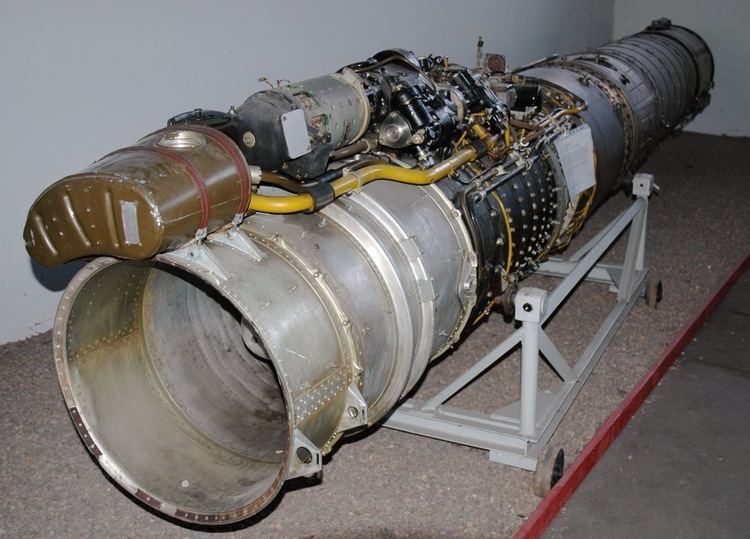The Tumansky RD-9 (initially designated Mikulin AM-5) was an early Soviet turbojet engine, not based on pre-existing German or British designs. The AM-5 was available in 1952 and completed testing in 1953; it produced 25.5 kN (5,700 lbf) thrust without afterburner. AM-5 engine is notable for making possible the first Soviet supersonic interceptor, the MiG-19 and the first all-weather area interceptor, the Yak-25. When Sergei Tumansky replaced Alexander Mikulin as the OKB-24's chief designer in 1956, the engine was renamed RD-9. The engine was later built under license in China as the WP-6.
Variants and applications
RD-9ARD-9BUsed in the
East German civilian jetliner project
Baade 152 in 1958 and 1959, replaced when
Pirna 014 engines became available.
RD-9AKNon-afterburning versions for the Yak-25 and Yak-26.
RD-9AF-300Afterburning version for the Yak-27 and Yak-28.
RD-9AF2-300Afterburning version for the Yak-27 and Yak-28.
RD-9BAfterburning version for early MiG-19s.
RD-9BF-811Afterburning version for later MiG-19s.
RD-9VAfterburning version used in the Ilyushin Il-40P.
WP-6Chinese built version for the
Shenyang J-6.
Data from
Type: Afterburning turbojetLength: 5,560 mm (219 in)Diameter: 670 mm (26 in)Dry weight: 725 kg (1,600 lb)Compressor: Single-spool 9-stage Axial compressorMaximum thrust: 3,000 kgf (6,600 lbf, 29 kN) military power, 3,750 kgf (8,300 lbf, 37 kN) with afterburnerTurbine inlet temperature: 860 ° CSpecific fuel consumption: 104 kg/(h·kN) (1.02 lb/(h·lbf)) military power, 169 kg/(h·kN) (1.66 lb/(h·lbf)) with afterburnerThrust-to-weight ratio: 5.2:1
